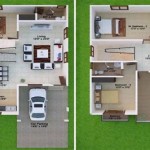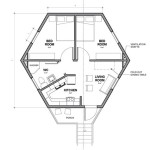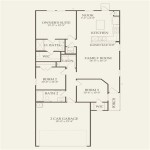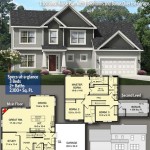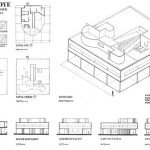Essential Aspects of Richard Neutra Kaufmann House Floor Plans
The Richard Neutra Kaufmann House, designed by renowned architect Richard Neutra, stands as a testament to modernism and functionalist design. As a UNESCO World Heritage Site, the house is recognized for its innovative floor plan that seamlessly integrates indoor and outdoor living spaces. Exploring the essential aspects of these floor plans provides insights into the design philosophy and architectural prowess of Neutra.
Open and Flowing Living Spaces
One defining characteristic of Kaufmann House floor plans is their openness and fluidity. By eliminating unnecessary walls and partitions, Neutra created a spacious and airy living environment. The interconnected rooms flow seamlessly into each other, allowing natural light to penetrate deep into the house and enhancing a sense of spaciousness.
Integration of Indoor and Outdoor
Neutra's design emphasized the seamless integration of indoor and outdoor spaces. Large windows and sliding glass doors provide expansive views of the surrounding landscape, blurring the boundaries between interior and exterior. The outdoor areas, such as the courtyards and terraces, are carefully designed to complement the living spaces, creating a harmonious indoor-outdoor experience.
Functional Zoning
Despite the open plan concept, Neutra carefully zoned the Kaufmann House to ensure privacy and functionality. The public areas, including the living room, dining room, and kitchen, are situated in the central portion of the house. The private areas, such as the bedrooms and bathrooms, are cleverly tucked away in separate wings, providing a sense of seclusion while maintaining accessibility.
Efficient Use of Space
Neutra was a master of space optimization. The Kaufmann House floor plans feature a compact and efficient layout that maximizes every inch of available space. Built-in furniture, such as storage units and seating, reduce clutter and create a streamlined aesthetic. The use of sliding doors instead of hinged doors further conserves space and enhances flexibility.
Flexible and Adaptable
Neutra's designs prioritized flexibility and adaptability. The floor plans of the Kaufmann House are designed to accommodate changing needs and lifestyles. Movable walls and partitions allow for the reconfiguration of spaces, creating a highly customizable living environment.
Emphasis on Materials and Textures
Neutra's choice of materials and textures played a crucial role in the overall design aesthetic of Kaufmann House. The use of glass, steel, and concrete creates a modern and industrial feel. Natural materials, such as wood and stone, add warmth and contrast, creating a harmonious blend that reflects the surrounding environment.
Conclusion
The Richard Neutra Kaufmann House floor plans are a masterful demonstration of modernist design principles. With their open and flowing spaces, integration of indoor and outdoor, functional zoning, efficient use of space, flexibility, and emphasis on materials and textures, these plans represent a timeless architectural achievement. They continue to inspire architects and designers, showcasing the enduring legacy of Neutra's innovative approach to residential design.

Ad Classics Kaufmann House Richard Neutra Archdaily

Gallery Of Ad Classics Kaufmann House Richard Neutra 14

Floor Plan Richard Neutra Kaufmann Desert House Palm Springs Plans Ground

Five Things You Should Know About The Kaufmann Desert House Rost Architects

Kaufman Desert House Floor Plan Mimari çizimler Maket
Richard Neutra S Ambiguous Relationship To Luxury

Browse All Architecture By Neutra 2c Richard From Modernist Ncsu Libraries Collections
Kaufmann Desert House 1946 Palm Springs 3800 Sq Ft Architect Richard Neutra View From Road Photo Greatbuil
Richard Neutra S Ambiguous Relationship To Luxury
Kaufmann House



